Who doesn’t love shooting historic firearms? I love my modern guns as much as the next guy, but I’ve always been a sucker for old blasters, especially military types. The first gun I bought as an adult was a 1908 Brazilian Mauser that I still pull out and shoot once in a while. In the video linked below, Luke Tomes and Louee Dessent from the History Hit YouTube Channel visit the Royal Armory in Leeds, UK to fire a 16th century arquebus, an 18th century “Brown Bess” flintlock musket, and a World War I era Lee Enfield SMLE rifle.

British firearms historian Jonathan Ferguson guides and instructs Luke and Louee, neither of whom have ever handled a real firearm. Luke, Louee, and Jonathan visit the Royal Armory’s indoor range, where they learn about and fire three firearms that span 500 years of British history.
The Arquebus
The term “arquebus” comes from the Dutch hakebusse, meaning “hook gun” or “hook tube.” This may come from the butt stock’s bent shape, or some muzzles may have had a metal hook to brace the firearm. It might be both.
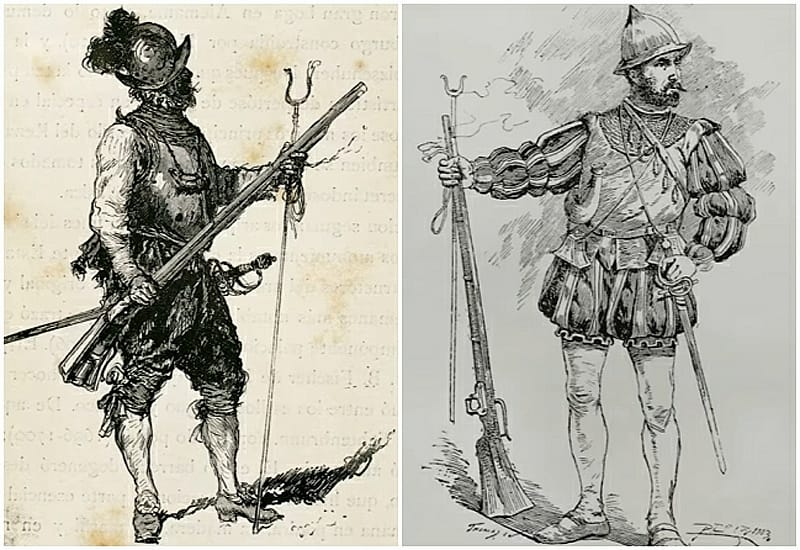
Each arquebus was handmade by individual gunsmiths so there was no standard model. There wasn’t even a standard projectile caliber, meaning each soldier, or “arquebusier,” had to tailor his ammunition to his gun. But the projectiles were invariably large caliber, as we see in the video.

The term “arquebus” was applied to several different firearms but, in this case, the gun is a smoothbore, matchlock muzzleloading long gun. The “match” is a slow-burning fuse called a “slow match.” Each arquebusier kept a length of burning fuse during combat. After loading, the arquebusier attached the match to the “serpentine,” which we would think of as a kind of hammer. When he was ready to fire, the arquebusier pulled the trigger, which moved the serpentine forward, bringing the match into contact with the pan. The pan is filled with black powder during the loading process.

Ideally, the arquebus then fires, though it is noticeably delayed from the trigger pull. The gun’s firing is preceded by a flash as the powder ignites. Sometimes the powder flashes without firing the weapon, leading to the expression “flash in the pan,” denoting a sudden event that amounts to nothing.

Firing the Arquebus
Luke and Louee fire a reproduction arquebus, based on a model from the 1530s. Firing a real 16th-century weapon could be dangerous, as well as possibly damaging an irreplaceable historical artifact. Jonathan loads for them since the process is understandably awkward. With Luke and Louee being new shooters, I was glad to see Jonathan emphasizing proper firearms safety as he worked with Luke and Louee.
Luke goes first. His first attempt is a misfire, meaning he has to hold the heavy arquebus up while Jonathan repositions the match. His shot is remarkably accurate, considering his support arm was getting tired. The flash before the shot would take some getting used to since it’s right in the shooter’s face.

Louee repeats the process, but his shot isn’t as accurate as Luke’s despite getting a good ignition on the first try. Both shooters remark on the weapon’s low recoil. Jonathan agrees that it is a soft shooter, with much of its weight forward.
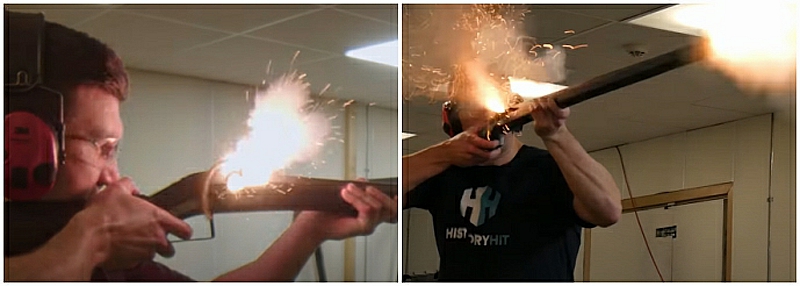
The Brown Bess Musket
“Brown Bess” refers to a series of standard-issue smoothbore flintlock muskets used by the British Army in the 18th and 19th centuries. This example is a Model 1793 India Pattern Type I Musket, which was used in the Napoleonic Wars.
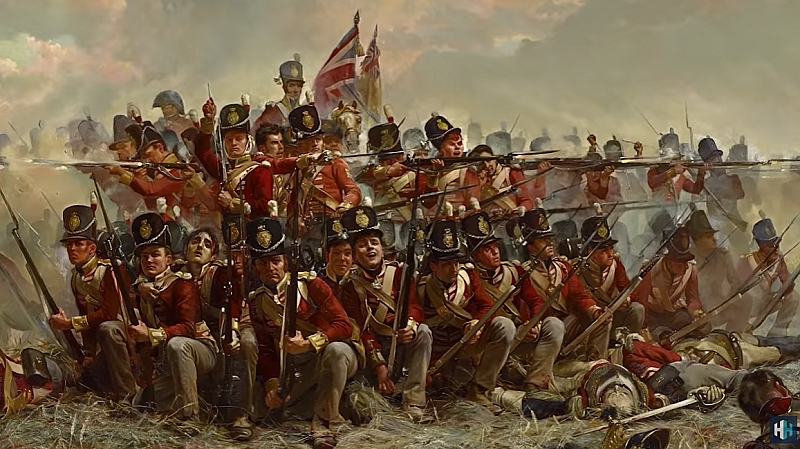
Jonathan explains the name “Brown Bess” to Luke and Louee. “Brown” meant “ordinary,” presumably because it was issued to “ordinary” soldiers, as opposed to the rifles issued to more elite troops. “Bess” was a common girl’s name. Jonathan says the concept of the soldier’s firearm being his new wife was common even then and he references the famous scene from Full Metal Jacket. Some things never change.

Unlike the arquebus, the guys shoot a real Brown Bess, one of 3 million Model 1793 India Pattern Muskets made by the British. So that gun may have been fired in anger over 200 years ago.
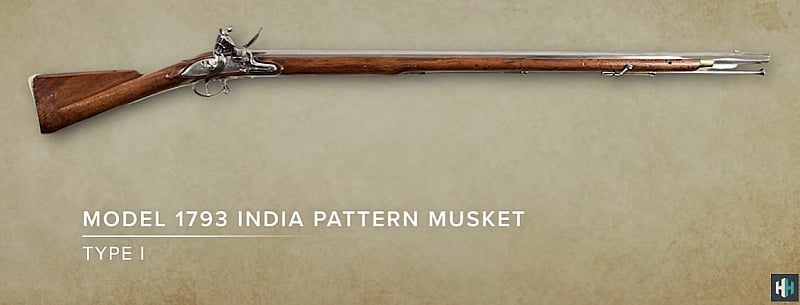
The obvious improvements are the flintlock mechanism and paper cartridge, along with the standardized manufacture and ammunition. The British Army’s standard firing rate was three aimed shots per minute.
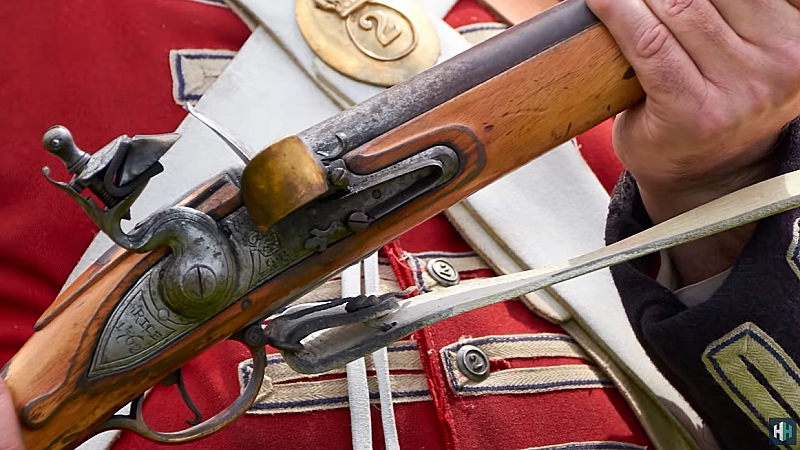
Firing the Brown Bess Musket
Louee goes first with the Brown Bess, with Jonathan talking him through the still intricate loading process. They both learn how to tear the paper cartridge with their teeth, along with avoiding getting a mouthful of gunpowder. Jonathan notes that the musket’s projectile is larger than the arquebus round, requiring more powder to propel.
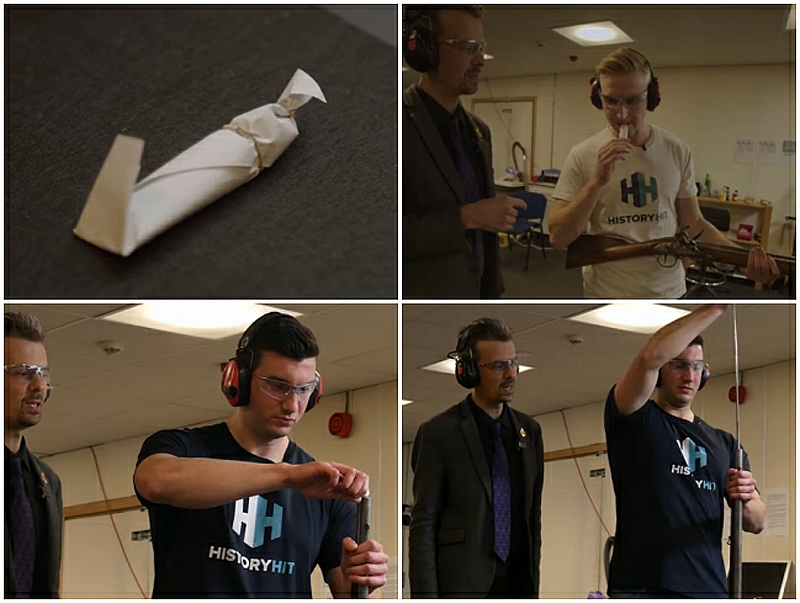
The paper cartridge is also more efficient. Where much of the matchlock gun’s energy was dissipated in the pan, the musket’s entire powder charge is contained in the barrel, producing much more energy and velocity. The felt recoil is therefore much higher.
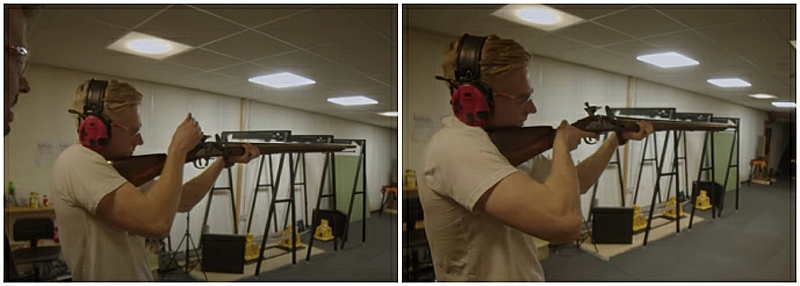
Both shooters take their turn with Louee proving to be the better musketeer. Both remarked on the musket’s greater recoil. There’s still a noticeable flash as the flint strikes the steel, igniting the powder. There is also a slight delay before the weapon fires, though not as long as the arquebus.
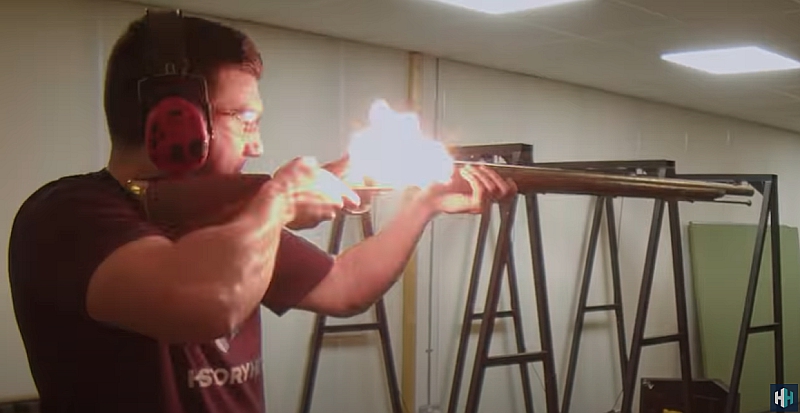
The Lee Enfield SMLE
The Short Magazine Lee Enfield is one of the classic bolt action battle rifles. The Lee Enfield series was introduced in 1895 and, after a few modifications, served as the primary British service rifle of the First World War. Later updates kept the Enfield in service into the mid-1950s, including widespread use in World War II.

Jonathan’s choice for Luke and Louee’s range trip appears to be the iconic MK III or MK III* of World War I vintage. Chambered in .303 British, the MK III series is famous for the “Mad Minute,” a marksmanship exercise in which British soldiers fired from the prone for one minute. They began with five rounds loaded, with stripper clip reloads coming from a bandolier. They fired at a 48-inch target at 300 yards. The standard was 15 hits, not shots, in one minute. The Mad Minute record was 38 hits, fired by Sergeant Alfred Snoxall (or Frank Snoxell, accounts differ) of the Loyal North Lancashire Regiment in 1914. Snoxall was a marksmanship instructor at the time.
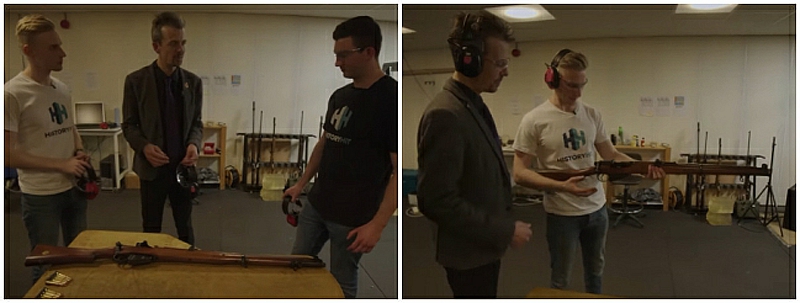
The Mad Minute’s battlefield debut was the 1914 Battle of Mons. British rifle fire was so intense that the attacking German soldiers reportedly thought they were facing machine guns. World War I hadn’t devolved into trench warfare yet, so the Germans withdrew instead of attacking machine guns over open ground.
Firing the Lee Enfield SMLE
Luke goes first, loading the rifle with a five-round stripper clip. Both shooters fire five-round groups. Jonathan explains the great leap from muzzleloaders and even single-shot breechloading rifles to the internal magazine rifles, which exponentially increased the individual rifleman’s firepower.
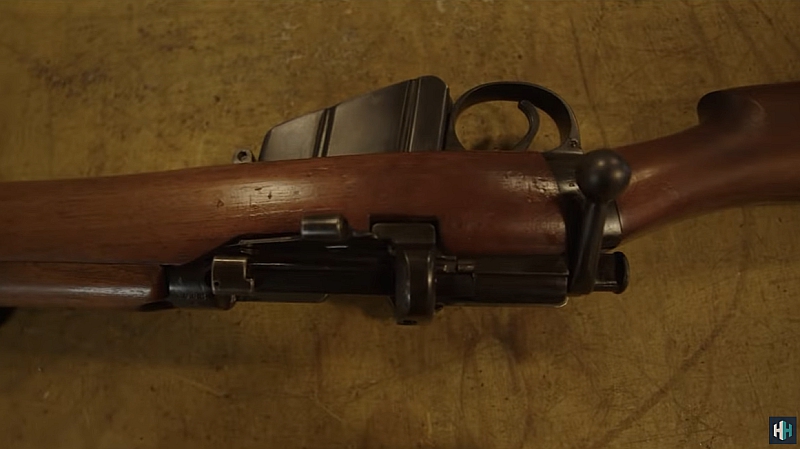
Luke was clearly unfamiliar with the SMLE’s mechanism, but Jonathan got him through, and he fired what looked to be about a six-inch group at short range. Louee was also clearly a beginner, requiring some instruction, but he then ripped off a very nice two-inch four round group with one flyer. Both shooters seemed to like the SMLE better than the arquebus or the Brown Bess.

Shooting History
Luke and Louee clearly enjoyed their experience. Their shooting stances were less than ideal, and they were uncertain at times, but we’ve all been there at some point. Jonathan notes that, for first-time shooters, they did remarkably well.
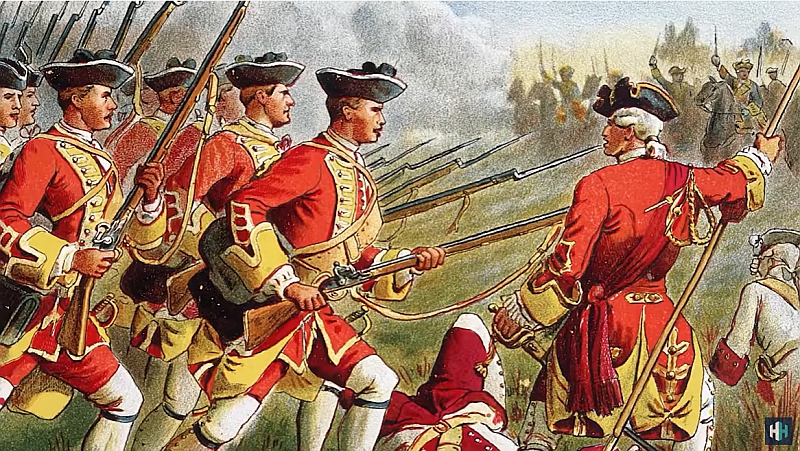
Louee talks about how cool it was to shoot those three firearms, spanning some 400 years of development, one after the other. It does seem like a novel experience. Luke comments that the technological advancements make it easier to understand the increasing death tolls of wars throughout history, culminating in “the devastation of the First World War.” It’s true that technology drives tactics and vice versa. World War I was no exception.
Luke and Louee have produced a very interesting video here. Do yourself a favor and check it out. Jonathan shares much more knowledge than we have room for here. We expect many of you have fired a Lee Enfield rifle at some time or another. How about a Brown Bess or even an arquebus? Let us know in the comments.